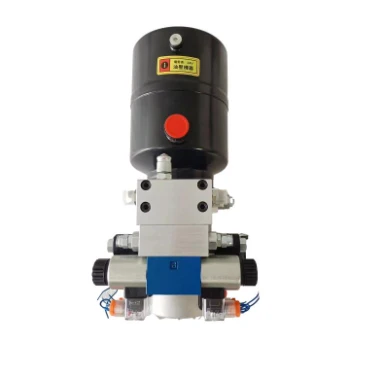Oct . 13, 2024 09:55 Back to list
Customized Solutions for Rebuilding Hydraulic Cylinders to Enhance Performance and Longevity
Custom Rebuilding of Hydraulic Cylinders Ensuring Optimal Performance and Longevity
The importance of hydraulic cylinders in various industries cannot be overstated. These components play a pivotal role in machinery, allowing for the generation of force and movement necessary for numerous applications ranging from construction to manufacturing. However, over time, hydraulic cylinders can wear down, losing efficiency and potentially leading to costly downtime. This is where custom rebuilding comes into play—a process that not only restores but can also enhance the performance of hydraulic cylinders.
Understanding Hydraulic Cylinders
Hydraulic cylinders are mechanical devices that convert hydraulic energy into linear motion. Typically, they consist of a cylindrical barrel, piston, rod, and seals. As pressurized hydraulic fluid enters the cylinder, it creates force that moves the piston, thus enabling machinery to lift, push, or pull. However, repeated cycles and exposure to harsh environments can lead to wear and tear. Common issues include seal leaks, rod scratches, and barrel pitting, all of which can significantly impact a cylinder's performance.
The Need for Custom Rebuilding
When a hydraulic cylinder fails, replacing it with a new one can be expensive and time-consuming. Custom rebuilding is an effective alternative that offers numerous benefits. This process involves disassembling the failed cylinder, assessing the damage, and replacing or repairing the worn components.
Expert technicians often utilize specialized equipment and parts tailored to the specific needs of the machinery. This customization can involve selecting materials that are more resistant to wear, which is particularly important for cylinders operating in harsh environments like construction sites or industrial settings. By opting for custom rebuilding, businesses can achieve better performance metrics than if they simply replaced the cylinder with an off-the-shelf option.
The Custom Rebuilding Process
The custom rebuilding of hydraulic cylinders generally follows several well-defined steps
1. Disassembly The first step involves carefully disassembling the entire cylinder. This requires specialized knowledge to avoid further damage to components.
2. Inspection Once disassembled, each part is meticulously inspected for wear and damage. Technicians will look for signs of corrosion, pitting, and other defects that could compromise performance.
custom rebuilding hydraulic cylinder

3. Repair or Replacement Based on the inspection, technicians will determine which parts need to be repaired or replaced. In some cases, this may include retubing the barrel, replacing seals, or machining the rod to remove scratches.
4. Customization This is the key advantage of custom rebuilding. Custom parts can be manufactured to meet specific performance requirements. For example, if a cylinder is subjected to higher pressures than standard models, materials with greater tensile strength can be used.
5. Reassembly and Testing After repairs and customization, the hydraulic cylinder is carefully reassembled. Rigorous testing follows to ensure that the cylinder operates at optimal efficiency, adhering to required safety standards.
Benefits of Custom Rebuilding
1. Cost Efficiency Custom rebuilding is often more cost-effective than purchasing a new hydraulic cylinder, especially for high-end or specialized equipment.
2. Improved Performance By addressing specific issues and customizing parts, rebuilt cylinders can often outperform new ones.
3. Sustainability Rebuilding instead of replacing contributes to environmental sustainability by reducing waste and the need for new materials.
4. Minimized Downtime Custom rebuilding can often be completed faster than sourcing and installing a new cylinder, thereby minimizing equipment downtime.
Conclusion
The custom rebuilding of hydraulic cylinders is a vital service that not only extends the life of critical machinery but also enhances performance and efficiency. As industries continue to evolve, the demand for expert rebuilding services will grow, highlighting the importance of skilled technicians and specialized practices. Investing in custom rebuilding can save money, improve reliability, and promote sustainability, ensuring that hydraulic systems continue to function effectively in any application.
-
Fork Lift Power Units - Hebei Shenghan | Efficiency, Reliability
NewsJul.13,2025
-
1.5-Ton Turbocharged Cylinder-Hebei Shenghan|Hydraulic Solution,Energy Efficiency
NewsJul.13,2025
-
Auto Hoist Power Units-Hebei Shenghan|Efficiency&Industrial Lifting
NewsJul.13,2025
-
Double Acting Power Units-Hebei Shenghan|Hydraulic Solutions,Industrial Efficiency
NewsJul.13,2025
-
1.5 Ton Lifting Cylinder 70/82-40-290-535 - High-Performance Hydraulic Solution | Hebei Shenghan
NewsJul.13,2025
-
Fork Lift Power Units - Hebei Shenghan | Efficiency&Reliability
NewsJul.13,2025
